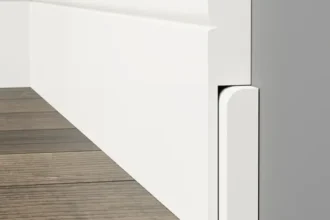For many people dealing with hair loss, a hair system—also known as a toupee, wig, or non-surgical hair replacement system—is a life-changing solution. Modern hair systems look incredibly natural, restore confidence, and can be worn daily with comfort. But one question many first-time wearers ask is: Can you sleep while wearing a hair system?
The answer isn’t entirely straightforward. While it is technically possible, the real consideration lies in how sleeping with a hair system affects its longevity, comfort, and appearance. In this article, we’ll explore what happens when you sleep in a hairpiece, the potential drawbacks, and the best practices for maintaining your hair system overnight.

Understanding How a Hair System Works
Before diving into the sleeping question, it’s important to understand how a hair system is attached. Depending on the method, hair systems are bonded to the scalp using medical-grade adhesives, double-sided tapes, or clips. Once secured, they blend seamlessly with natural hair and scalp, making them suitable for daily activities—workouts, showers, and yes, even sleep.
However, just because you can sleep in a hair system doesn’t always mean you should do so without precautions. The way you care for your system while sleeping can significantly impact its lifespan and overall look.
Can You Sleep With a Hair System On?
Yes, you can sleep while wearing a hair system. In fact, most wearers do so without major problems. Hair systems are designed to stay in place for days or even weeks at a time, depending on the adhesive used. Removing and reattaching every night would be impractical, time-consuming, and could actually cause more wear and tear on both your scalp and the base material.
That said, sleeping in a hair system can expose it to friction, tangling, and shedding. The tossing and turning of sleep causes hair strands to rub against the pillow, which may lead to breakage or matting over time. This is why proper care and protective measures are essential.
Potential Issues of Sleeping in a Hair System
While it’s safe, there are a few drawbacks to consider:
1. Shortened Lifespan
A high-quality hair system, especially one made from human hair, can last several months with proper care. But frequent friction during sleep can shorten its lifespan, meaning you may need replacements sooner.
2. Tangles and Matting
Longer hair systems are particularly prone to tangling when you sleep. Knots and matting not only affect the natural look but can also be difficult to comb out without causing damage.
3. Adhesive Wear and Tear
Sweating at night or constant friction against the pillow can weaken the adhesive bond, causing the system to lift at the edges. This means you may need more frequent touch-ups.
4. Discomfort for Light Sleepers
Although hair systems are designed to be lightweight, some wearers initially find them slightly uncomfortable at night. This usually improves as you get used to sleeping with the system.
Best Practices for Sleeping in a Hair System
If you plan to wear your hair system to bed, there are several ways to protect it and extend its life:
Choose the Right Pillowcase
Switching from a cotton pillowcase to silk or satin greatly reduces friction, preventing tangles and breakage. Silk pillowcases are smoother and allow the hair to glide, minimizing damage while you sleep.
Tie or Braid Longer Hair
For those with medium to long hair systems, loosely braiding the hair or tying it into a low ponytail before bed can reduce tangling. Avoid tight hairstyles, as they can strain the base and weaken the adhesive bond.
Maintain a Night Routine
Gently brushing your hair system before bed removes knots and prevents matting. Using a wide-tooth comb or specialized hair system brush is recommended to avoid pulling on the base.
Sleep Position Matters
Back sleepers often experience less friction than side sleepers. If possible, adjust your sleeping position to minimize pressure on the sides of your head where adhesives or tapes are more prone to lifting.
Should You Ever Remove Your Hair System at Night?
For some people, especially those using clip-on hairpieces or partial hair systems, removing the unit at night may be more practical. This allows for scalp ventilation, reduces friction, and can extend the life of the system.
However, for full-bonded systems designed to be worn continuously for weeks, removing them daily isn’t recommended. Frequent removal can compromise the adhesive and damage the base material. Instead, focus on proper nighttime care and regular maintenance appointments.
Balancing Comfort and Durability
The key takeaway is that while you can safely sleep with a hair system on, it requires mindful habits to ensure comfort and durability. If treated correctly, your system will continue to look natural and last for its full intended lifespan.
It comes down to personal preference—some wearers feel more comfortable keeping it on 24/7, while others prefer giving their scalp a nightly break. Experimenting with both methods can help you decide what works best for your lifestyle.
Conclusion
So, can you sleep while wearing a hair system? Absolutely. Modern non-surgical hair replacement systems are designed to handle daily life, including nighttime wear. However, friction, tangling, and adhesive wear are natural concerns that require proactive care.
By investing in small adjustments—like switching to silk pillowcases, maintaining a bedtime brushing routine, and securing longer hair—you can comfortably sleep in your hair system while keeping it looking fresh and natural.
Ultimately, whether you choose to wear your hairpiece to bed or remove it occasionally, the decision depends on your comfort, lifestyle, and maintenance routine. With the right approach, a hair system can provide not just daytime confidence but round-the-clock peace of mind.



